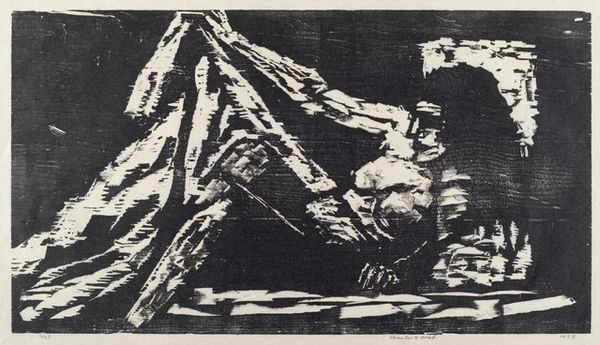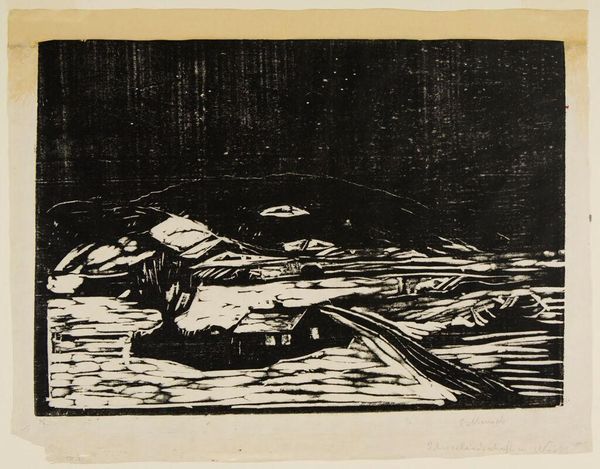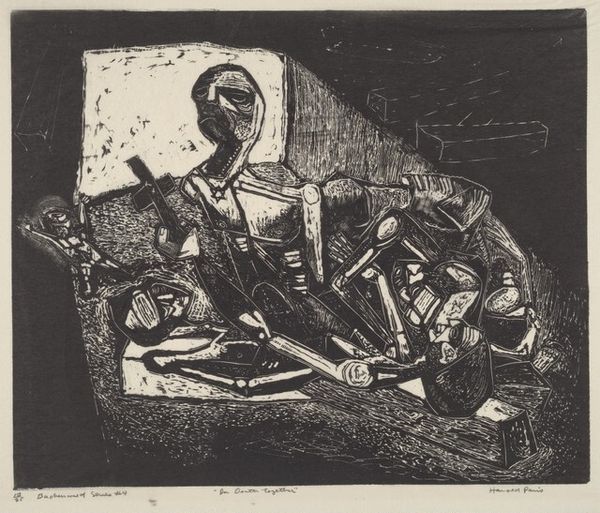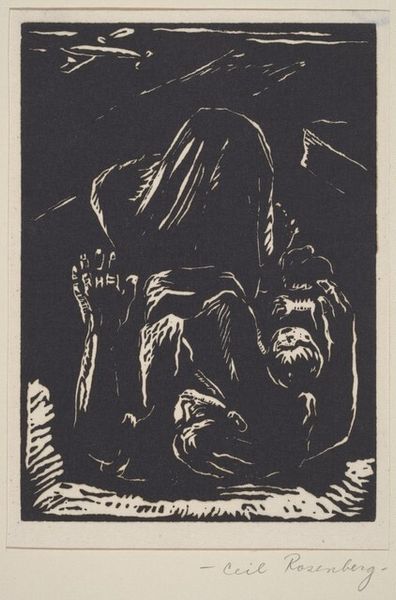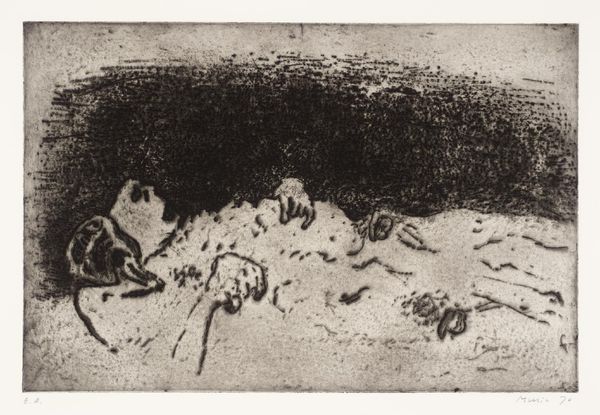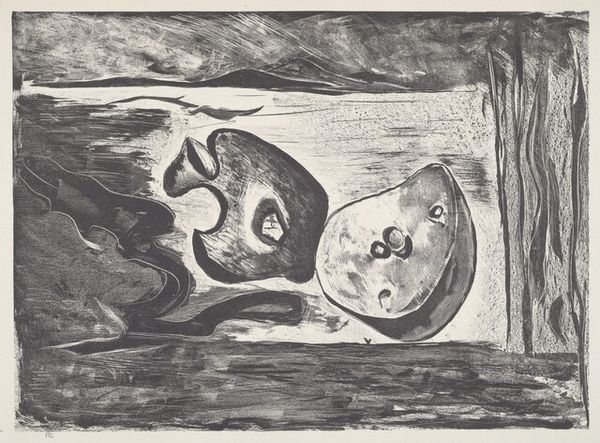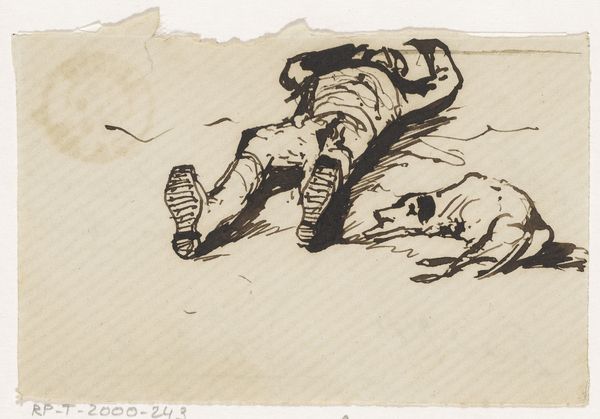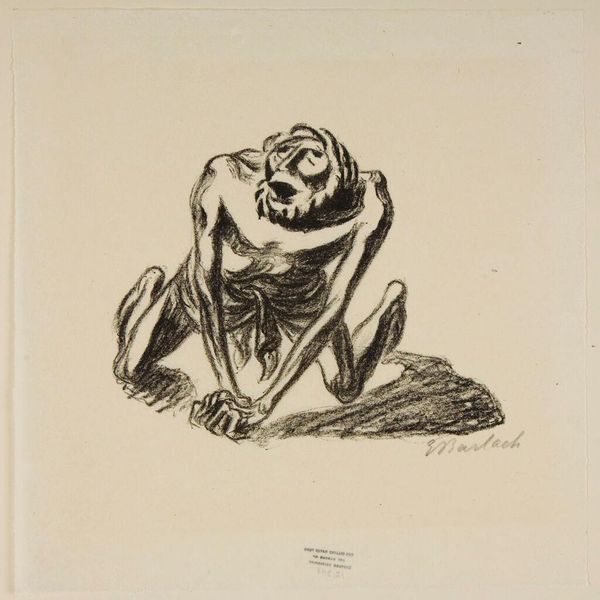
print, woodcut
#
ink drawing
#
narrative-art
# print
#
german-expressionism
#
figuration
#
woodcut
Dimensions: 11 7/8 x 20 3/4 in. (30.16 x 52.71 cm) (image)22 x 27 1/2 in. (55.88 x 69.85 cm) (sheet)
Copyright: No Copyright - United States
Curator: The oppressive darkness in this work really strikes me. There is something terribly desolate about the contrasting textures. Editor: Indeed. What you're responding to is likely the visual language of German Expressionism. This print, entitled "The Widow II", by Käthe Kollwitz, dates from possibly 1922 or 1923. It’s a woodcut, now residing here at the Minneapolis Institute of Art. Curator: A woodcut… The sharp, unforgiving lines seem appropriate, given the subject. The starkness of the medium, coupled with the artist's deliberate use of negative space, really drives home a sense of isolation. There is this visual emphasis on line and shape, that I find absolutely captivating and bleak. Editor: The piece certainly evokes powerful emotions. Kollwitz made art acutely attuned to social suffering. "The Widow" here is understood not just as an image of personal grief, but as an emblem of the widespread suffering experienced by women in the aftermath of the First World War. The recurring motif of mothers grieving sons lost to the war is evident here, isn't it? Curator: Absolutely, there's a palpable weight, like the very wood itself is imbued with sorrow. Even though the woman’s figure appears nearly prone, there's an upward thrust to those legs which counters it, creating tension that visually mirrors the push and pull of despair and resilience. Editor: Her husband, Karl Kollwitz, served as a doctor in a working-class district of Berlin, an environment rife with social and economic inequality. I think the subject matter and themes were unavoidable for her, living within that tension herself, while also experiencing a first-hand encounter of the devastation after her youngest son died in battle in WWI. Curator: Knowing Kollwitz's background certainly contextualizes the heavy subject matter. And even divorced from this historical reality, that figure's angular pose against the flattened picture plane gives her sorrow such weight and gravity. It’s not merely depiction; it is a feeling. Editor: Yes, and understanding the socio-political and historical contexts certainly provides us another framework to unpack this devastating print, giving us deeper insights to consider and new possibilities for interpreting Kollwitz's emotional impact of personal and global loss.
Comments
No comments
Be the first to comment and join the conversation on the ultimate creative platform.
